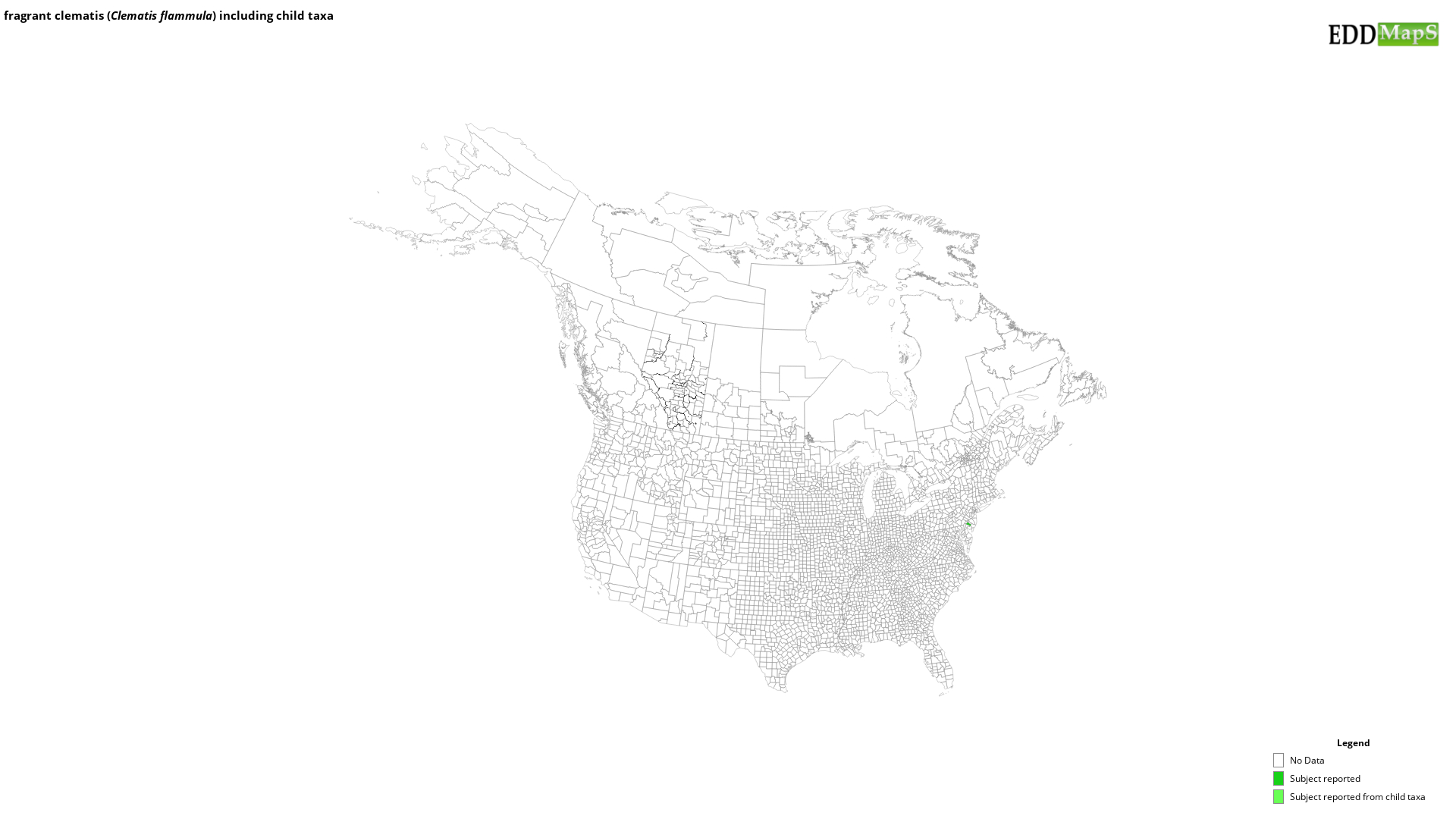fragrant clematis
(Clematis flammula)
This species is Introduced in the United States
Clematis flammula is a climbing woody deciduous vine, which can be evergreen under the right climatic conditions. It can grow up to 12-23 ft. (3.6-7 cm) and sends out many shoots. It is native to Europe, temperate Asia, and northern Africa.
Foliage
C. flammula The leaves are opposite, compound (with 5-9 leaflets), and the margins are entire. Leaflets are each 2-4 in. (5-10 cm) long.
Flowers
Showy, white, fragrant, four-petaled flowers appear in the late summer through the fall. Flowers are less than 2 in. wide.
Fruit
Seeds are also showy and production is prolific. Brown seed heads have long, silvery-gray, feather-like hairs or bristles attached. This allows the seed to be dispersed by the wind.
Ecological Threat
C. flammula grows best along forest edges, landscaping, and gardens. Grows vigorously and can quickly overgrow native vegetation. All parts of the plant are toxic.
Citations
Rawlins, K.A., R.L. Winston, C.T. Bargeron, D.J. Moorhead, and R. Carroll. 2018. New Invaders of the Northeast and Northcentral United States. USDA Forest Service, Forest Health Assessment and Applied Sciences Team, Morgantown, West Virginia. FHTET-2017-04. Retrieved from https://bugwoodcloud.org/resource/pdf/FHTET-2017-04_New%20Invaders_NE.pdf
Selected Images
Maps
EDDMapS Distribution - This map is incomplete and is based only on current site and county level reports made by experts, herbaria, and literature. For more information, visit www.eddmaps.org
State Lists - This map identifies those states that have this species on their invasive species list or law.
Invasive Listing Sources
Taxonomic Rank
| Domain: Eukarya |
| Kingdom: Plantae |
| Phylum: Magnoliophyta |
| Class: Magnoliopsida |
| Superorder: Ranunculanae |
| Order: Ranunculales |
| Family: Ranunculaceae |
| Genus: Clematis |
| Clematis flammula |
References
Common Name Reference: USDA, NRCS. 2010. The PLANTS Database. National Plant Data Center, Baton Rouge, LA, USA.
Scientific Name Reference: USDA, NRCS. 2010. The PLANTS Database. National Plant Data Center, Baton Rouge, LA, USA.


